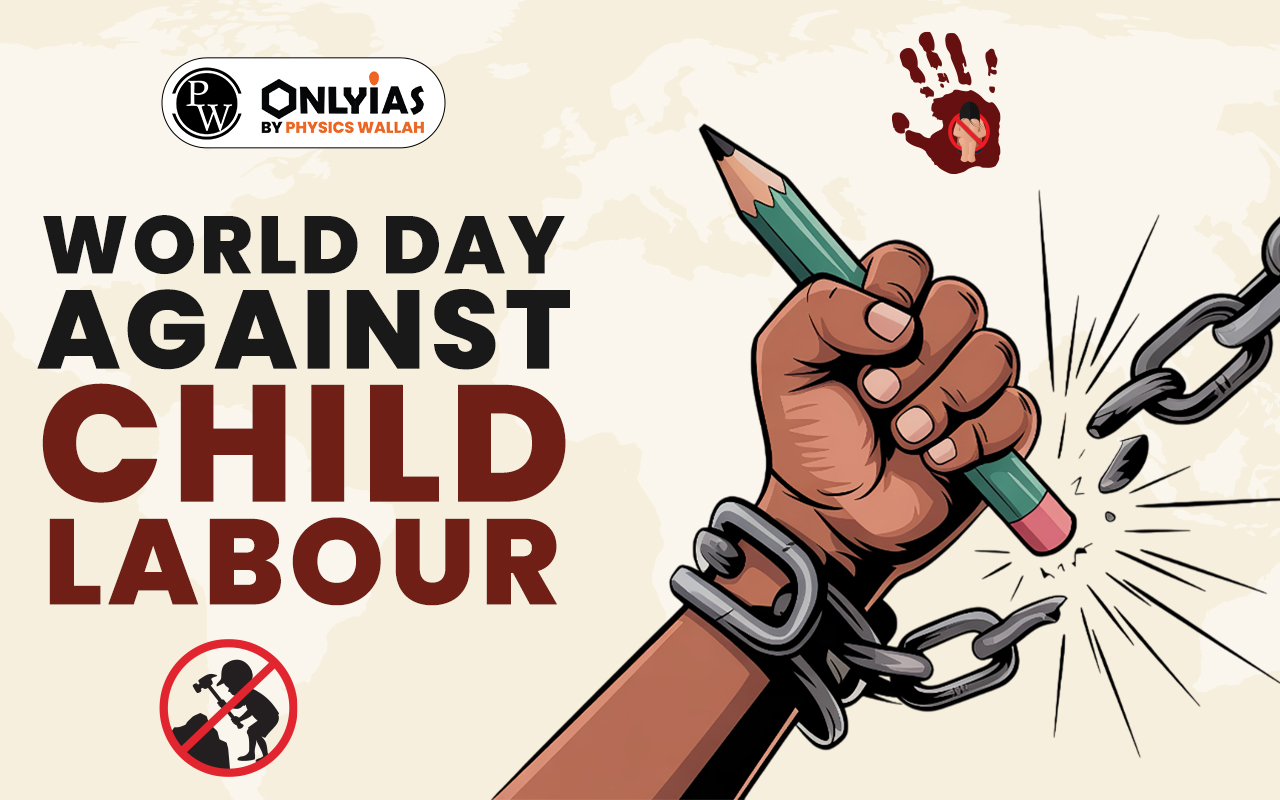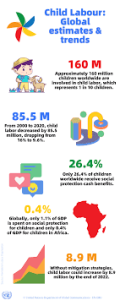World Day Against Child Labour 2025, observed on June 12, highlights global efforts to end child labour. This year focuses on new ILO-UNICEF data, urging stronger policies to meet SDG Target 8.7 and eliminate child labour in all its forms by 2025.

World Day Against Child Labour 2025: World Day Against Child Labour, observed annually on 12th June, is a global initiative launched by the International Labour Organisation (ILO) to highlight the grave issue of child exploitation and mobilise efforts to eradicate it. The World Day Against Child Labour 2025 assumes even greater significance as it coincides with the release of new global estimates and trends on child labour, jointly prepared by the ILO and UNICEF. This critical data will guide global policy debates and re-energise efforts toward achieving the Sustainable Development Goal (SDG) Target 8.7—to eliminate child labour in all its forms by 2025.
World Day Against Child Labour 2025 is an international observance led by the International Labour Organisation (ILO) and commemorated annually on 12th June. This global initiative seeks to raise awareness, promote advocacy, and encourage action to eliminate all forms of child labour. The 2025 edition focuses on reviewing global estimates and trends in child labour, highlighting both the progress made and the significant challenges that remain.
It also emphasises the urgent need for full implementation of international conventions and stronger domestic enforcement to eradicate child exploitation in every form.
| World Day Against Child Labour 2025 Overview | |
| Particulars | Details |
| Observed On | 12th June 2025 |
| Organized By | International Labour Organisation (ILO) |
| Primary Objective | To eliminate child labour and ensure protection, education, and rights for children |
| Theme | Yet to be officially announced |
| Focus Area for 2025 | Release of global estimates & trends by ILO and UNICEF |
| Key ILO Conventions Highlighted | Convention No. 138 (Minimum Age) & Convention No. 182 (Worst Forms of Child Labour) |
The World Day Against Child Labour 2025 Theme for this year is – “Progress is clear, but there’s more to do: let’s speed up efforts!”. This year’s theme reflects both the progress achieved and the urgency to intensify action to meet global targets..
The World Day Against Child Labour 2025 aims to amplify voices demanding stronger preventive mechanisms, stricter enforcement, and wider partnerships to end child labour. With over 160 million children globally still trapped in child labour, it’s a pressing human rights crisis that affects nearly 1 in every 10 children worldwide.
This year’s observance focuses on evaluating progress, addressing emerging challenges, and reinforcing the commitment toward achieving Sustainable Development Goal 8.7, which targets the eradication of child labour in all forms by 2025.
According to the latest data, 160 million children (approximately 1 in every 10 children globally) are engaged in child labour. Of these, nearly half are involved in hazardous work that directly threatens their health and development.

Notably, 56% of all child labourers live in middle-income countries, dispelling the myth that it is only a problem in the poorest nations.
India has made steady progress in reducing child labour. As per Census 2011, the number of working children in the 5–14 age group dropped to 43.53 lakh, down from 1.26 crore in 2001. However, child labour in India remains a socio-economic issue intertwined with poverty and illiteracy.
India has a robust set of laws and constitutional provisions aimed at eradicating child labour:
Article 24 of the Indian ConstitutionThis article mandates: “No child below the age of fourteen years shall be employed to work in any factory or mine or engaged in any other hazardous employment.” |
|---|
It works in pair with Article 21A, which ensures free and compulsory education for children aged 6 to 14, thus reinforcing a child’s right to a protected and educated upbringing.
This legislation prohibited child employment in specified hazardous occupations and regulated working conditions in others. The 2016 Amendment transformed it into the Child and Adolescent Labour (Prohibition and Regulation) Act, which:
These rules define roles for enforcement agencies, provide clarity on family enterprises, and lay out conditions for child artists in the entertainment sectors.
Formulated in 1987, the National Policy on Child Labour takes a gradual and rehabilitative approach, and lays a multi-pronged strategy to tackle the problem while focusing on:
Initiated in 1988, this central sector scheme seeks to withdraw children from hazardous occupations and rehabilitate them. Key features include:
As of March 2021, the scheme was operational in 59 districts, with over 324 districts sanctioned over the years.
The PENCIL Portal (Platform for Effective Enforcement for No Child Labour), launched in 2017, is a centralised platform connecting the Centre, States, Districts, and Citizens for real-time reporting and tracking of child labour cases.

Anyone can file complaints regarding child labour, which are automatically routed to the appropriate Nodal Officer for swift action.
List Of International National Days 2025 Month-Wise List
Despite numerous laws and schemes, child labour remains a persistent issue in India. The root causes are deeply embedded in socio-economic factors, making eradication a complex and ongoing challenge. A holistic approach that addresses poverty, education, enforcement, and awareness is essential to achieve lasting change.
Major challenges include:
To align with the global vision of eliminating child labour by 2025, the following actions are essential:
The World Day Against Child Labour 2025 is more than an observance—it is a call to action. It urges every stakeholder—governments, employers, citizens—to reaffirm their commitment and collaborate effectively. The dream of a child-labour-free world can become a reality only through persistent, inclusive, and rights-based approaches.
Ready to boost your UPSC 2025 preparation? Join PW’s UPSC online courses today!
World Day Against Child Labour awareness is crucial to highlight the plight of millions of children forced into work worldwide.
It is observed on June 12, aiming to raise global attention on ending child labour practices.
The International Labour Organisation (ILO) initiated this global observance to promote child protection and labour reform.
To spread World Day Against Child Labour awareness, promote education, and support child labour elimination strategies.
By reporting violations, supporting child education, and spreading anti-child labour campaigns and initiatives.
The theme is not announced yet, but it is likely to focus on strengthening child rights protection laws and ensuring access to quality education.

<div class="new-fform">
</div>